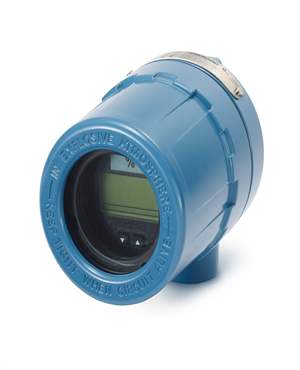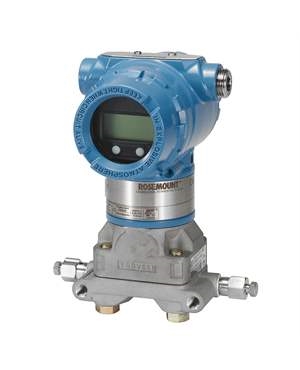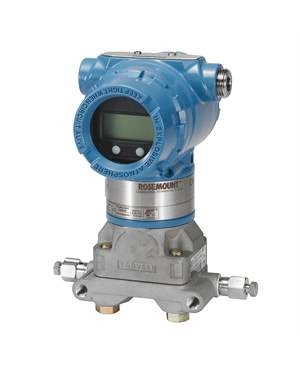Pressure Monitoring in Pump Systems: A Comprehensive Guide
Brian Craig
November 28, 2023
Pressure monitoring in pump systems is a critical aspect of ensuring the smooth and reliable operation of various industrial processes. This comprehensive guide aims to shed light on the pivotal role that pressure monitoring plays in optimizing pump system performance. Understanding the nuances of pressure management is essential for industries ranging from manufacturing and agriculture to water treatment and beyond.
Optimal pressure is the key to achieving peak performance in pump systems. Whether in industrial processes or municipal water supply networks, maintaining the right pressure level is essential for ensuring the efficient transfer of fluids. In this blog post will delve into the various ways in which optimal pressure contributes to the efficiency and reliability of pump systems.

Key Components of a Typical Pump System
A typical pump system comprises several essential components that work together to facilitate fluid movement. This section provides an overview of these key components:
- Pump: The core component responsible for imparting energy to the fluid, initiating the flow within the system.
- Motor or Driver: The power source that drives the pump's mechanical components, converting electrical, diesel, or other forms of energy into kinetic energy for fluid movement.
- Piping and Valves: The network of pipes through which the fluid travels, with valves controlling the direction, rate, and pressure of the flow.
- Control Systems: Devices and systems that regulate the pump's operation, including speed controllers, pressure switches, and monitoring equipment.
- Couplings and Bearings: Mechanical components that connect the pump to the motor and facilitate smooth, efficient operation.
Impact of Inadequate Pressure on System Efficiency
Maintaining optimal pressure is paramount for achieving and sustaining system efficiency. Inadequate pressure can have several adverse effects on pump system performance:
- Reduced Flow Rate: Insufficient pressure leads to a decrease in the flow rate, limiting the pump's ability to meet the demands of the system. This can result in inefficiencies in industrial processes or a shortfall in water supply for municipal applications.
- Increased Energy Consumption: Pumps operating at lower pressures often require more energy to achieve the desired flow rates. Monitoring pressure allows operators to optimize pump settings, minimizing energy consumption and improving overall efficiency.
- Decreased Component Lifespan: Inadequate pressure places additional stress on pump components, leading to premature wear and tear. Bearings, seals, and impellers are particularly susceptible to damage in low-pressure conditions, impacting the longevity of the pump system.
Types of Pressure Monitoring Devices
- Pressure Gauges: Pressure gauges are among the simplest and most widely used devices for monitoring pressure in pump systems. They provide a visual indication of the pressure level within a system and come in various types to suit different applications. Bourdon Tube Gauges, Diaphragm Gauges, Digital Pressure Gauges and Differential Pressure Gauges are essential for providing real-time information about the status of a pump system, allowing operators to quickly assess the pressure conditions and take corrective action if needed.
- Pressure Transmitters: Pressure transmitters typically use a diaphragm, strain gauge, or piezoelectric crystal to convert mechanical pressure into an electrical signal. This signal is then transmitted to a monitoring system. Pressure transmitters can be seamlessly integrated into control systems, allowing for automated adjustments based on pressure readings. This enhances the efficiency and responsiveness of pump systems.
- Pressure Sensors: Pressure sensors are devices that detect and measure pressure and convert it into an electrical signal. Common types include piezoresistive, capacitive, and piezoelectric pressure sensors. Each type has unique characteristics, making them suitable for specific environments and pressure ranges.
Proper Placement of Pressure Monitoring Devices
The effectiveness of pressure monitoring in pump systems relies heavily on the strategic placement of monitoring devices. Proper installation ensures accurate readings and timely detection of any deviations from optimal pressure levels.
- Inlet and Outlet Points: Install pressure monitoring devices at both the inlet and outlet points of the pump system. This allows for a comprehensive understanding of the pressure variations across the entire system.
- Critical Points: Identify critical points in the system where pressure fluctuations may have significant consequences. These could include points prone to cavitation, areas where pressure is regulated, and locations where pressure is critical for downstream processes.
- Avoidance of Vibrations and Heat Sources: Install pressure gauges, transmitters, or sensors away from areas with excessive vibrations or heat sources, as these factors can impact the accuracy and reliability of pressure readings.
- Consideration of Pipe Characteristics: Take into account the characteristics of the pipes, such as diameter and material, when determining the placement of pressure monitoring devices. Certain pipe configurations may influence pressure readings, and proper consideration helps mitigate potential inaccuracies.
By addressing proper placement of pressure monitoring devices to best practices in installation and calibration, operators can enhance the reliability and accuracy of pressure monitoring in pump systems. At The Transmitter Shop (TTS) is a distributor of superior quality remanufactured pressure gauges and transmitters, originally sourced from reputed brands such as Fisher Vee-Ball, Rosemount and so on. The company specializes in remanufacturing, reconditioning, and calibration of devices. If you want to know more about our services please contact us via phone +1-888-964-8837or via email at [email protected] .
Related Posts
- What are the Steps Involved in Calibrating Pressure Gauge?
- All Important Questions on Reconditioned Transmitters Answered
- Is Remanufactured Transmitter a Better Option than a New One?
- Differential Pressure Transmitters: How Do They Help in Flow Measurements?
- 3 Whats that Explain How Often You Should Calibrate Pressure Transducer
- Guidelines for Troubleshooting Pressure Transducers
- Learn How to Calibrate a Pressure Transmitter – II
- Learn How to Calibrate a Pressure Transmitter
- Know Three Interesting Uses of Pressure Transmitters
- The Features and Benefits of Rosemount 1199 Direct Mount Transmitters
- 3 Major Pressure Transmitter Technologies That Made the Device Popular
- An Unconventional Guide to Selecting the Right Pressure Sensor
- Factors To Be Considered While Differentiating $40 and $400 Pressure Transmitters
- Tips to Augment the Performance and Service Life of Pressure Transmitter
- Factors of Consideration When Choosing Pressure Transmitters
- 5 Most Popular Pressure Transmitter Technologies
- Important Calibration Tips for Pressure Sensors
- Tips to Improve the Performance of Pressure Sensors
- Factors to Consider When Choosing a Pressure Transmitter Manifold
- Safety Tips for Differential Pressure Transmitter Operation
- Impact of Shock and Vibration on Pressure Transducer
- Rosemount 3051S vs 3051C Transmitter – What is Your Choice?
- Rosemount 2088 Vs Rosemount 3051 – A Few Points of Differences Discussed
- What Are Diaphragm Seals and Their Types?
- Difference in Conventional Transmitters and Smart Transmitters
- How to Choose Diaphragm Seals for Your Application?
- How to Select Pressure Transmitter for Your Application?
- Remote Seals: Significance, Working Principle & Applications
- How Do You Calibrate A Flow Transmitter?
- What is Absolute Pressure Transmitter & how does it work?
- HART Communication Protocol: Overview, Working Principle, Benefits in Industrial Automation
- Absolute and Gauge Pressure Transmitters - Overview and Working Principle
- Flow Meter vs Flow Transmitter: Know the Difference
- Temperature Transmitter: How to Select The Efficient One for Your Application?
- How Do You Test for 4 to 20mA Signal in a Pressure Transmitter?
- Multivariable Transmitter: What Is It and How Does It Work?
- Pressure Transmitters vs. Pressure Transducers: Learn the Differential Characteristics
- Procedure to Calculate Accuracy of Pressure Transmitter Discussed
- An Ultimate Selection Guide for Flow Transmitters
- The Benefits and Challenges of HVAC System Balancing
- Understanding Pressure Ranges and Units for Fluid System Monitoring
- Understanding the Impact of Pressure Fluctuations on Drying Performance
- Monitoring and Controlling Energy Production in Power Plants
- Common Challenges in Air Flow Measurement and How to Overcome Them
- Pressure Monitoring in Pump Systems: A Comprehensive Guide
- Exploring Density and Viscosity Measurement in Industrial Processes
- Steam Boiler Drum Level Measurement A Comparison of Control System Technologies
- Furnace Flame Sensor Faults Everything You Need to Know for Safe Operation
- Comparison between Multi Valve Manifolds Block Valves and Bleed Valves
- Understanding Electrochemical Detection: Principles, Techniques and Environmental Application
- How Can Greenhouse Gas Emissions Be Reduced?
- Furnace Flame Sensor Faults Everything You Need to Know for Safe Operation
- Understanding Electrochemical Detection: Principles, Techniques and Environmental Application
- How Can Greenhouse Gas Emissions Be Reduced?
- Pneumatic Pressure Controllers: A Safe Choice for Hazardous Areas
- A Practical Guide to Vacuum Measurement and Operation
QUICK ENQUIRY







